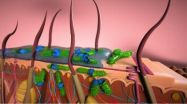(Press-News.org) SEATTLE—How best to care for the many adolescents who have depression? In a collaborative care intervention, a care manager continually reached out to teens—delivering and following up on treatment in a primary-care setting (the office of a pediatrician or family doctor, not a psychiatrist or psychologist) at Group Health Cooperative. Depression outcomes after a year were significantly better with this approach than with usual care, according to a randomized controlled trial published in JAMA.
Depression is common in adolescents: Up to one in five have major depression by age 18. Depressed youth are at greater risk of suicide, substance abuse, early pregnancy, dropping out of school, recurrent depression, and poor long-term health.
"Proven treatments are available, including medications and psychotherapy," said Laura P. Richardson, MD, MPH, an investigator at Seattle Children's Research Institute Center for Child Health, Development, and Behavior, a professor of pediatrics at the University of Washington (UW) School of Medicine, and an affiliate investigator at Group Health Research Institute. "But most American teens with depression don't get any treatment for it. We want to change that."
The joint Seattle Children's–Group Health–UW study was called Reaching Out to Adolescents in Distress (ROAD). In the study, 101 teens age 13-17 who were depressed on screening at nine Group Health Medical Centers in Washington state were randomly assigned to receive either collaborative care or the care that they would usually receive. With usual care, teens received their depression screening results and could get mental health services at Group Health.
In the collaborative care intervention, a depression care manager was based in the primary care doctor's practice. The care manager educated and helped each teen and their parents make individual decisions about treatment. Then the care manager either provided brief cognitive behavioral therapy sessions or worked with the teen's doctor to choose and initiate an antidepressant medication.
"For adolescents, as for adults, depression can make it difficult to seek help and follow through," Dr. Richardson said. "That's why it's so important that the care manager reached out to the teens regularly to see whether they were improving—and met weekly with a mental health specialist supervisor to review how the patients were responding to care." For youth whose depression didn't respond to the initial treatment, the care manager stepped up the treatment, following a proven protocol.
The results: At one year, depressed teens who received collaborative care were more likely to receive evidence-based treatment, and they had more decreases in depressive symptoms, using a commonly used measure of depression, compared with those who received usual care.
"The body and mind are intimately connected," Dr. Richardson added. "So it makes good sense to organize treatment for depression in this way, integrating care for mental and physical health within primary care."
Collaborative care for depression has been proven in more than 70 randomized controlled trials in adults, including TEAMcare, involving some of the same researchers. But only two studies had previously tested collaborative care for depression in teens, with mixed results.
Next, the research team will work to develop strategies to support clinics that are interested in implementing this model in practice.
INFORMATION:
National Institute of Mental Health grant R01 MH085645-01A1 funded this study.
Dr. Richardson's co-authors were Evette Ludman, PhD, a senior research associate at Group Health Research Institute; Jeff Lindenbaum, MD, Group Health's director of teen health services; Cindy Larison, MA, a biostatistician at Seattle Children's Research Institute; Chuan Zhou, PhD, research associate professor of pediatrics at the UW School of Medicine and Seattle Children's; Greg Clarke, PhD, a senior investigator at Kaiser Permanente Center for Health Research, in Portland, OR; David Brent, MD, a professor of psychiatry, pediatrics, and epidemiology at the University of Pittsburgh and Western Psychiatric Institute and Clinic, in Pittsburgh, PA; Elizabeth McCauley, PhD, a professor of psychiatry and behavioral sciences at the UW School of Medicine and Seattle Children's; and Wayne Katon, MD, professor and vice chair of the UW School of Medicine's department of psychiatry and behavioral sciences. Dr. Katon is also an affiliate investigator at Group Health Research Institute. Drs. Richardson, Zhou, and Katon are also affiliated with the UW School of Public Health.
ROAD
More information about the joint Seattle Children's–Group Health–UW Reaching Out to Adolescents in Distress (ROAD) study is at http://www.reachout4teens.org.
Seattle Children's Research Institute
Located in downtown Seattle's biotech corridor, Seattle Children's Research Institute is pushing the boundaries of medical research to find cures for pediatric diseases and improve outcomes for children all over the world. Internationally recognized investigators and staff at the research institute are advancing new discoveries in cancer, genetics, immunology, pathology, infectious disease, injury prevention and bioethics, among others. As part of Seattle Children's Hospital, the research institute brings together leading minds in pediatric research to provide patients with the best care possible. Seattle Children's serves as the primary teaching, clinical and research site for the Department of Pediatrics at the University of Washington School of Medicine, which consistently ranks as one of the best pediatric departments in the country.
UW Medicine
UW Medicine is part of the University of Washington. Its mission is to improve the health of the public by advancing medical knowledge, providing patient care, and training the next generation of physicians and other health professionals. Its system includes Harborview Medical Center, Northwest Hospital & Medical Center, Valley Medical Center, UW Medical Center, UW Neighborhood Clinics, UW Physicians, UW School of Medicine and Airlift Northwest. UW Medicine is affiliated with Seattle Children's, Fred Hutchinson Cancer Research Center, the Veteran's Affairs Healthcare System in Seattle, and the Boise VA Medical Center. It shares in the ownership and governance of the Seattle Cancer Care Alliance and Children's University Medical Group.
Group Health Research Institute
Group Health Research Institute does practical research that helps people like you and your family stay healthy. The Institute is the research arm of Seattle-based Group Health Cooperative, a consumer-governed, nonprofit health care system. Founded in 1947, Group Health Cooperative coordinates health care and coverage. Group Health Research Institute changed its name from Group Health Center for Health Studies in 2009. Now celebrating its 30th anniversary year, the Institute has conducted nonproprietary public-interest research on preventing, diagnosing, and treating major health problems since 1983. Government and private research grants provide its main funding. Follow Group Health research on Facebook, Twitter, or YouTube.
Collaborative care improves depression in teens
Seattle Children's, Group Health, and University of Washington study in JAMA
2014-08-26
ELSE PRESS RELEASES FROM THIS DATE:
Attacking a rare disease at its source with gene therapy
2014-08-26
PHILADELPHIA — Treating the rare disease MPS I is a challenge. MPS I, caused by the deficiency of a key enzyme called IDUA, eventually leads to the abnormal accumulation of certain molecules and cell death.
The two main treatments for MPS I are bone marrow transplantation and intravenous enzyme replacement therapy, but these are only marginally effective or clinically impractical, especially when the disease strikes the central nervous system (CNS). Using an animal model, a team from the Perelman School of Medicine at the University of Pennsylvania has proven the efficacy ...
Unprecedented detail of intact neuronal receptor offers blueprint for drug developers
2014-08-26
Argonne, Ill.– Scientists succeeded in obtaining an unprecedented view of a type of brain-cell receptor that is implicated in a range of neurological illnesses, including Alzheimer's disease, Parkinson's disease, depression, schizophrenia, autism, and ischemic injuries associated with stroke.
The team of biologists at Cold Spring Harbor Laboratory used the U.S. Department of Energy's Advanced Photon Source at Argonne National Laboratory to get an atomic-level picture of the intact NMDA (N-methyl, D-aspartate) receptor should serve as template and guide for the design ...
Yale journal explores advances in sustainable manufacturing
2014-08-26
In recent years, increasing pressure from policymakers, consumers, and suppliers has prompted manufacturers to set environmental targets that go beyond reducing the pollutants they emit from their smokestacks or discharge into rivers and lakes. Today companies must also assess environmental performance at every step in their process, from the mining of primary materials to the use and recycling of their products.
This perspective has given rise to the discipline known as life cycle engineering, which connects the engineers who grapple with the efficiencies of production ...
Composition of Earth's mantle revisited
2014-08-26
Research published recently in Science suggested that the makeup of the Earth's lower mantle, which makes up the largest part of the Earth by volume, is significantly different than previously thought.
Understanding the composition of the mantle is essential to seismology, the study of earthquakes and movement below the Earth's surface, and should shed light on unexplained seismic phenomena observed there.
Though humans haven't yet managed to drill further than seven and a half miles into the Earth, we've built a comprehensive picture of what's beneath our feet through ...
What can 14th century Venice teach us about Ebola and other emerging threats?
2014-08-26
The way in which the Italian city of Venice dealt with the outbreak of the plague in the fourteenth century holds lessons on how to even mitigate the consequences of today's emerging threats, like climate change, terrorism, and highly infectious or drug-resistant diseases. So says Dr. Igor Linkov of the US Army Engineer Research and Development Center, and a visiting professor of the Ca Foscari University in Italy. Linkov led an article on resilience management appearing in Springer's journal Environment Systems and Decisions.
Venice was the hub of many trade routes into ...
Sorting cells with sound waves
2014-08-26
CAMBRIDGE, MA -- Researchers from MIT, Pennsylvania State University, and Carnegie Mellon University have devised a new way to separate cells by exposing them to sound waves as they flow through a tiny channel. Their device, about the size of a dime, could be used to detect the extremely rare tumor cells that circulate in cancer patients' blood, helping doctors predict whether a tumor is going to spread.
Separating cells with sound offers a gentler alternative to existing cell-sorting technologies, which require tagging the cells with chemicals or exposing them to stronger ...
Introducing the multi-tasking nanoparticle
2014-08-26
(SACRAMENTO, Calif.) — Kit Lam and colleagues from UC Davis and other institutions have created dynamic nanoparticles (NPs) that could provide an arsenal of applications to diagnose and treat cancer. Built on an easy-to-make polymer, these particles can be used as contrast agents to light up tumors for MRI and PET scans or deliver chemo and other therapies to destroy tumors. In addition, the particles are biocompatible and have shown no toxicity. The study was published online today in Nature Communications.
"These are amazingly useful particles," noted co-first author ...
HIV antibodies block infection by reservoir-derived virus in laboratory study
2014-08-26
WHAT:
A laboratory study led by scientists from the National Institute of Allergy and Infectious Diseases, part of the National Institutes of Health (NIH), lends further weight to the potential effectiveness of passive immunotherapy to suppress HIV in the absence of drug treatment. Passive immunotherapy for HIV is an experimental strategy that involves periodically administering broadly neutralizing HIV-specific antibodies (bNAbs) to control the virus. It would be advantageous to control HIV without antiretroviral drugs because of their cost, the potential for cumulative ...
Breakthrough antibacterial approach could resolve serious skin infections
2014-08-26
Like a protective tent over a colony of harmful bacteria, biofilms make the treatment of skin infections especially difficult. Microorganisms protected in a biofilm pose a significant health risk due to their antibiotic resistance and recalcitrance to treatment, and biofilm-protected bacteria account for some 80 percent of total bacterial infections in humans and are 50 to 1,000 times more resistant to antibiotics than simpler bacterial infections.
"In essence, we may have stumbled onto a magic bullet," said David Fox, a Los Alamos National Laboratory researcher on the ...
Scientists craft atomically seamless, thinnest-possible semiconductor junctions
2014-08-26
Scientists have developed what they believe is the thinnest-possible semiconductor, a new class of nanoscale materials made in sheets only three atoms thick.
The University of Washington researchers have demonstrated that two of these single-layer semiconductor materials can be connected in an atomically seamless fashion known as a heterojunction. This result could be the basis for next-generation flexible and transparent computing, better light-emitting diodes, or LEDs, and solar technologies.
"Heterojunctions are fundamental elements of electronic and photonic devices," ...
LAST 30 PRESS RELEASES:
Women with heart disease are less likely to receive life-saving drugs than men
How electric vehicle drivers can escape range anxiety
How do birds flock? Researchers do the math to reveal previously unknown aerodynamic phenomenon
Experts call for global genetic warning system to combat the next pandemic and antimicrobial resistance
Genetic variations may predispose people to Parkinson’s disease following long-term pesticide exposure, study finds
Deer are expanding north, and that’s not good for caribou
Puzzling link between depression and cardiovascular disease explained at last: they partly develop from the same gene module
Synthetic droplets cause a stir in the primordial soup
Future parents more likely to get RSV vaccine when pregnant if aware that RSV can be a serious illness in infants
Microbiota enterotoxigenic Bacteroides fragilis-secreted BFT-1 promotes breast cancer cell stemness and chemoresistance through its functional receptor NOD1
The Lundquist Institute receives $2.6 million grant from U.S. Army Medical Research Acquisition Activity to develop wearable biosensors
Understanding the cellular mechanisms of obesity-induced inflammation and metabolic dysfunction
Study highlights increased risk of second cancers among breast cancer survivors
International DNA Day launch for Hong Kong’s Moonshot for Biology
New scientific resources map food components to improve human and environmental health
Mass General Brigham research identifies pitfalls and opportunities for generative artificial intelligence in patient messaging systems
Opioids during pregnancy not linked to substantially increased risk of psychiatric disorders in children
Universities and schools urged to ban alcohol industry-backed health advice
From Uber ratings to credit scores: What’s lost in a society that counts and sorts everything?
Political ‘color’ affects pollution control spending in the US
Managing meandering waterways in a changing world
Expert sounds alarm as mosquito-borne diseases becoming a global phenomenon in a warmer more populated world
Climate change is multiplying the threat caused by antimicrobial resistance
UK/German study - COVID-19 vaccine effectiveness and fewer common side-effects most important factors in whether adults choose to get vaccinated
New ultraviolet light air disinfection technology could help protect against healthcare infections and even the next pandemic
Major genetic meta-analysis reveals how antibiotic resistance in babies varies according to mode of birth, prematurity, and where they live
Q&A: How TikTok’s ‘black box’ algorithm and design shape user behavior
American Academy of Arts and Sciences elects three NYU faculty as 2024 fellows
A closed-loop drug-delivery system could improve chemotherapy
MIT scientists tune the entanglement structure in an array of qubits
[Press-News.org] Collaborative care improves depression in teensSeattle Children's, Group Health, and University of Washington study in JAMA



